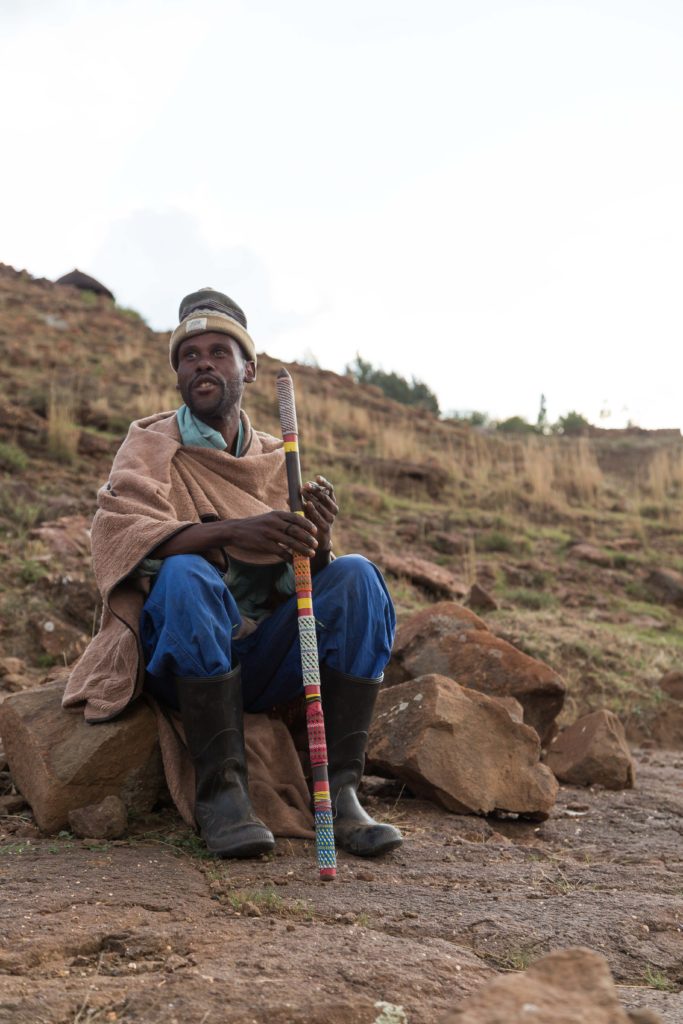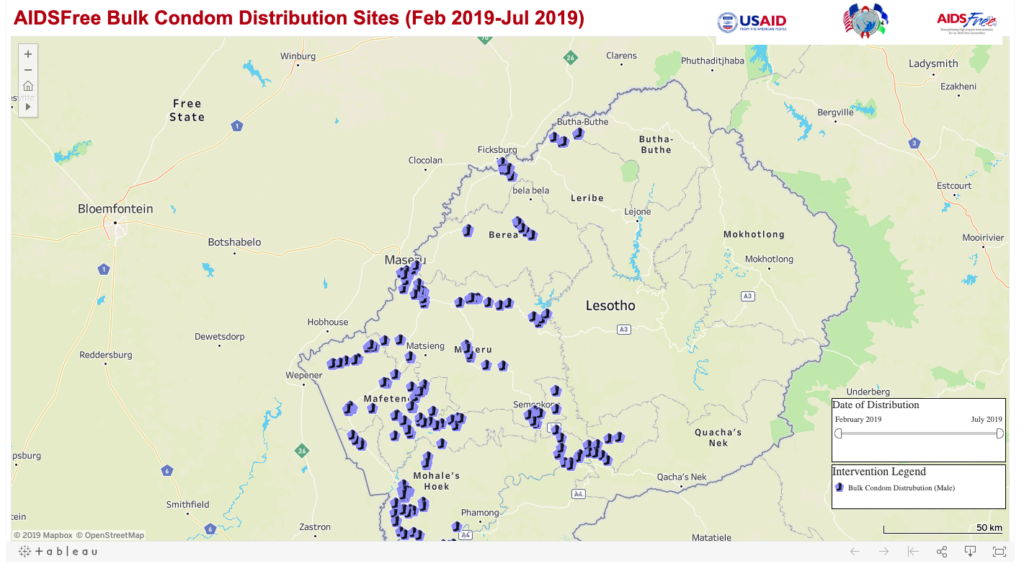Girls and Gumboots: Keeping Girls AIDS-Free in Lesotho
September 24th, 2019 | viewpoint
Ask anyone in the southern African nation of Lesotho to point out a “gumboot.” They’ll point to a pair of the rubber boots that are seemingly ubiquitous among Lesotho men, a necessary accessory for almost any everyday task.
Then again, they are just as likely to show you a condom, a gumboot of a very different kind. These gumboots— likhohlopo in the local Sesotho language—are key to Lesotho’s strategy to control its HIV epidemic. Local chiefs and the Strengthening High Impact Interventions for an AIDS-free Generation (AIDSFree) Project are targeting the country’s western districts with both prevention messages and condoms in their campaign.
“Combined prevention messaging and condom distribution are essential to preventing new HIV infections among sexually active men and women in Lesotho,” says Audrey Sullivan, a JSI senior team lead who supports AIDSFree’s HIV-prevention activities in country.
Since March of 2018, AIDSFree has worked in urban districts of Maseru and Berea through the Determined, Resilient, Empowered, AIDS-free, Mentored, and Safe (DREAMS) project to improve the health and well-being of Lesotho’s adolescent girls and young women. Since the project’s inception, AIDSFree has reached more than 60,000 girls and young women between 15 and 24 with messaging on HIV prevention, basic life skills, and similar topics. The project is funded by the U.S. President’s Emergency Plan for AIDS Relief and managed by JSI.
In addition to prevention messages for girls and young women, AIDSFree has been distributing condoms in Maseru, Berea, and three rural districts (Leribe, Mafeteng, and Mahale’s Hoek). Between March 2018 and May 2019, AIDSFree distributed 8.2 million condoms through face-to-face interactions and bulk distribution points such as bars, hotels, universities, and local community councils.
Epidemic control activities in Lesotho recognize that young women are disproportionately burdened with HIV, and the country leads the region in condom use (40 percent) among women 15–24.

However, major challenges persist in this country of 2.3 million. Many HIV-positive residents live in rural areas where the closest health facilities may be miles away by foot or horseback. Knowledge about HIV prevention and transmission in rural areas is low, at only 34 percent among women and 26 percent among men. Rural men most often work in the mountains as herders or look for work in cities. Girls often marry as early as 15 and remain at home taking care of children. Gender-based violence (GBV) is prevalent in these communities and is a major HIV risk among young women.
The project engages village chiefs and community leaders—whose support is critical to community acceptance—to convey information on how to prevent HIV and GBV. Consistent with DREAMS’ holistic approach to HIV prevention, AIDSFree uses creative methods to reach and empower adolescent girls and young women. For example, when a teachers’ strike curtailed outreach in schools, trained facilitators started extracurricular kids’ clubs to teach basic life skills. In another instance, when the AIDSFree team needed interns, it worked with TouchRoots Africa, another nongovernmental organization, to hire 17 young women to fill the positions. Within six months, one of the interns had found a permanent job doing similar work at another organization.

Awareness of condoms and prevention messaging is high in Lesotho, but so are troubling myths, including that condoms have worms, transmit HIV, and cause kidney disease. “The highland communities where we work are remote and difficult to reach. Members of these communities are deprived of health information and services,” says Sullivan. “Outreach agents dispel these myths and demonstrate how to use condoms effectively. We engage the community’s leaders to ensure prevention messages receive their endorsement and support.”
Written by Stephanie Joyce
We strive to build lasting relationships to produce better health outcomes for all.